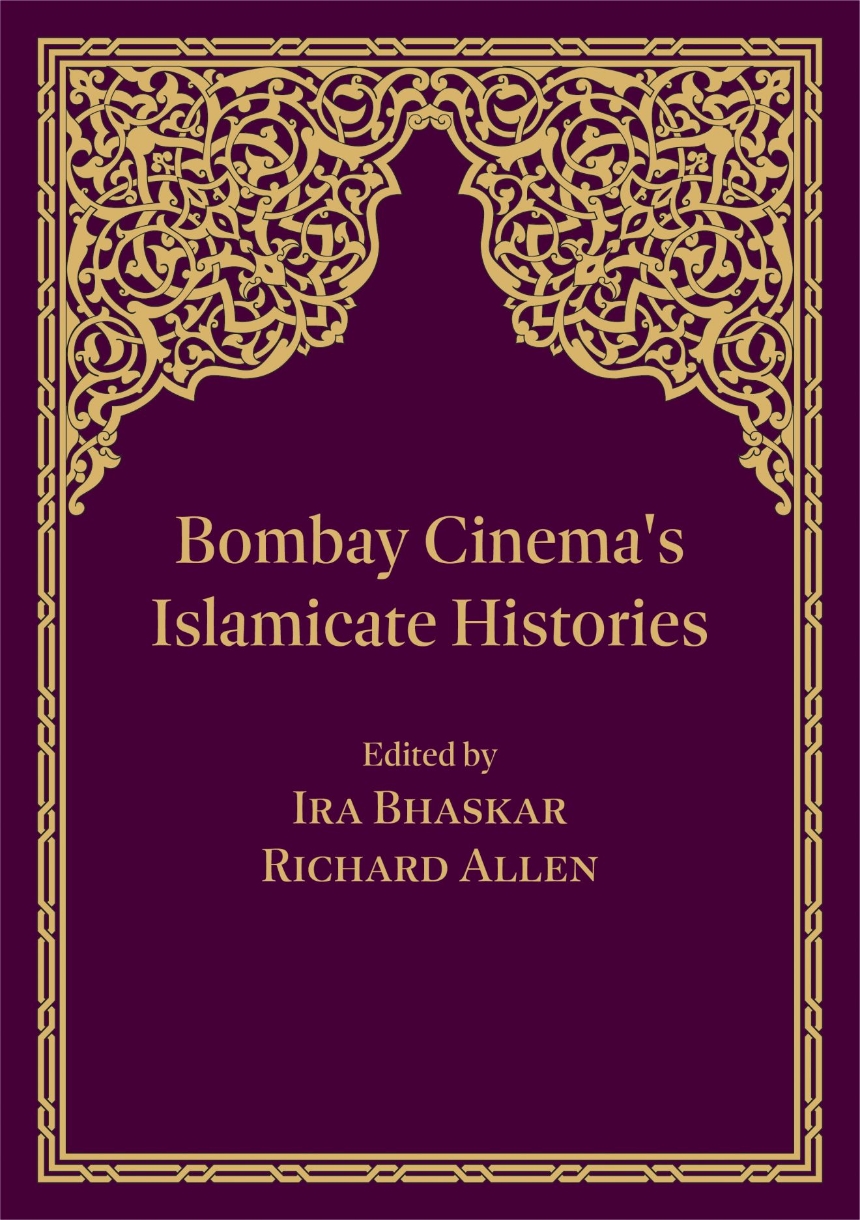Distributed for Intellect Ltd
Bombay Cinema’s Islamicate Histories
An engaging account of the history and influence of Muslim cultures on Bombay cinema.
Following Marshal Hodgson, the term “Islamicate” is used to distinguish the cultural forms associated with Islam from the religion itself. The term is especially useful in South Asia where Muslim cultures have commingled with other local cultures over a millennium to form a rich vein of syncretic aesthetic expression. Comprised of fourteen essays written by major scholars, this collection presents an engaging account of the history and influence of cultural Islam on Bombay cinema. The book charts the roots of South Asian Muslim cultures and the precursors of Bombay cinema’s Islamicate idioms in the Urdu Parsi Theatre; the courtesan cultures of Lucknow; the literary, musical, and performance traditions of north India; the traditions of miniature painting; and various modes of Perso-Arabic story-telling. Published at a time of acute crisis in the perception and understanding of Islam, this book demonstrates how Muslim and Hindu cultures in India are inextricably entwined.
Following Marshal Hodgson, the term “Islamicate” is used to distinguish the cultural forms associated with Islam from the religion itself. The term is especially useful in South Asia where Muslim cultures have commingled with other local cultures over a millennium to form a rich vein of syncretic aesthetic expression. Comprised of fourteen essays written by major scholars, this collection presents an engaging account of the history and influence of cultural Islam on Bombay cinema. The book charts the roots of South Asian Muslim cultures and the precursors of Bombay cinema’s Islamicate idioms in the Urdu Parsi Theatre; the courtesan cultures of Lucknow; the literary, musical, and performance traditions of north India; the traditions of miniature painting; and various modes of Perso-Arabic story-telling. Published at a time of acute crisis in the perception and understanding of Islam, this book demonstrates how Muslim and Hindu cultures in India are inextricably entwined.
Reviews
Table of Contents
Introduction: Bombay Cinema’s Islamicate Histories
– Richard Allen & Ira Bhaskar
Part One: Islamicate Histories
Passionate Refrains: The Theatricality of Urdu on the Parsi Stage
Kathryn Hansen
The Persian Masnavi tradition and Bombay Cinema
Sunil Sharma
Reflections from Padmini’s Palace: Women’s Voices of Longing and Lament in the Sufi Romance and Shi?i Elegy
Peter Knapczyk
Situating the ?awa’if : Nostalgia, Urdu Literary Cultures and Vernacular Modernity
Shweta Sachdeva Jha
Mughal Chronicles: Words, Images, and the Gaps Between Them
Kavita Singh
Justice, Love and the Creative Imagination in Mughal India
Najaf Haider
The ‘Muslim Presence’ in Padmaavat
Hilal Ahmed
Part Two: Cinematic Forms
Ali Baba’s Open Sesame: Unravelling the Islamicate in Oriental Fantasy Films
Rosie Thomas
The Textual, Musical and Sonic Journey of the Ghazal in Bombay Cinema
Shikha Jhingan
The Sufi Sacred,the Qawwali and the Songs of Bombay cinema
Ira Bhaskar
Avoiding Urdu and the ?awa’if: Re-gendering Kathak Dance in Jhanak Jhanak Payal Baaje
Philip Lutgendorf
The Poetics of Parda
Richard Allen
Transfigurations of the Star Body: Salman Khan and the Spectral Muslim
Shohini Ghosh
Terrorism, Conspiracy, and Surveillance in Bombay’s Urban Cinema
Ranjani Mazumdar
– Richard Allen & Ira Bhaskar
Part One: Islamicate Histories
Passionate Refrains: The Theatricality of Urdu on the Parsi Stage
Kathryn Hansen
The Persian Masnavi tradition and Bombay Cinema
Sunil Sharma
Reflections from Padmini’s Palace: Women’s Voices of Longing and Lament in the Sufi Romance and Shi?i Elegy
Peter Knapczyk
Situating the ?awa’if : Nostalgia, Urdu Literary Cultures and Vernacular Modernity
Shweta Sachdeva Jha
Mughal Chronicles: Words, Images, and the Gaps Between Them
Kavita Singh
Justice, Love and the Creative Imagination in Mughal India
Najaf Haider
The ‘Muslim Presence’ in Padmaavat
Hilal Ahmed
Part Two: Cinematic Forms
Ali Baba’s Open Sesame: Unravelling the Islamicate in Oriental Fantasy Films
Rosie Thomas
The Textual, Musical and Sonic Journey of the Ghazal in Bombay Cinema
Shikha Jhingan
The Sufi Sacred,the Qawwali and the Songs of Bombay cinema
Ira Bhaskar
Avoiding Urdu and the ?awa’if: Re-gendering Kathak Dance in Jhanak Jhanak Payal Baaje
Philip Lutgendorf
The Poetics of Parda
Richard Allen
Transfigurations of the Star Body: Salman Khan and the Spectral Muslim
Shohini Ghosh
Terrorism, Conspiracy, and Surveillance in Bombay’s Urban Cinema
Ranjani Mazumdar

